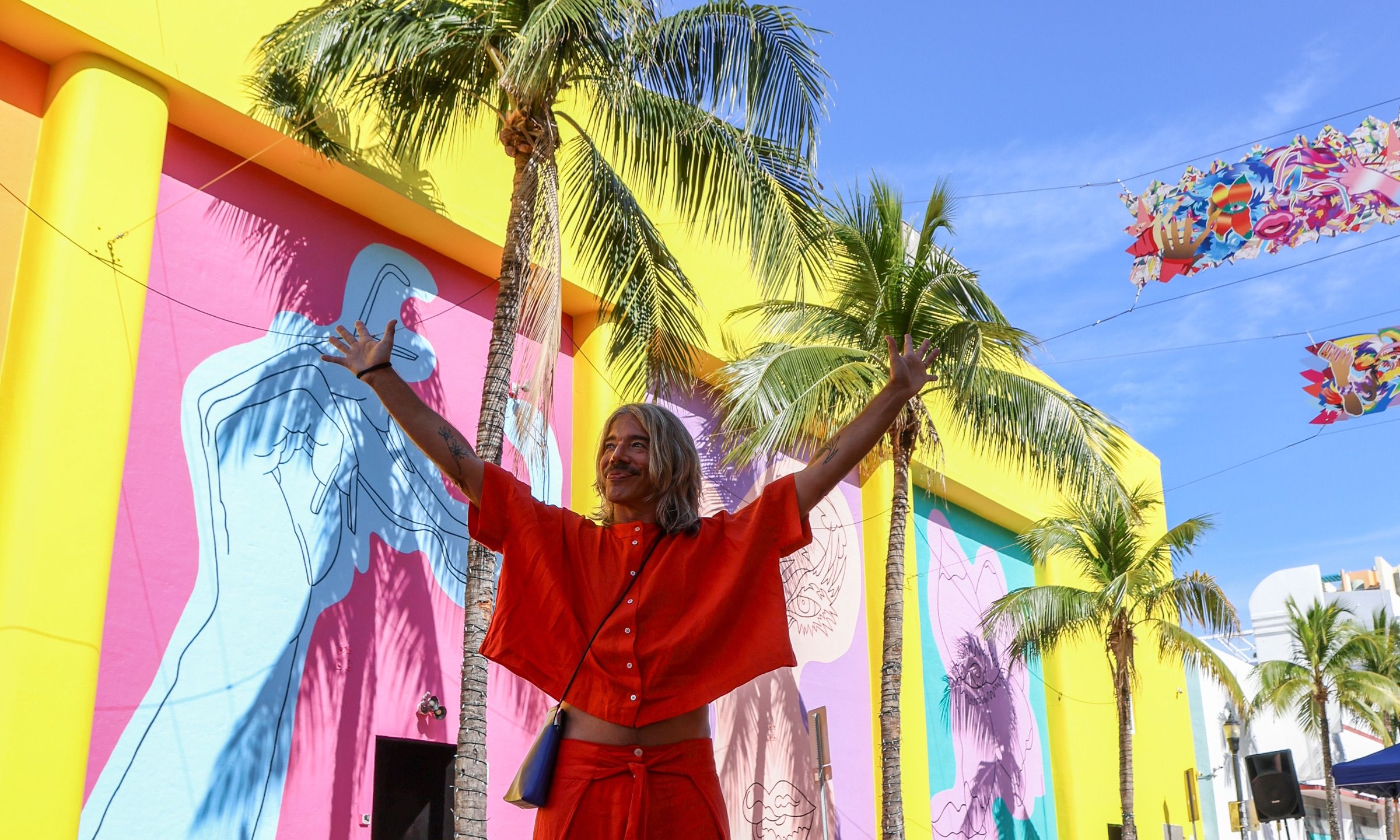Eli Sudbrack, founder of collective assume vivid astro focus (avaf), in Miami Beach for the opening of adora vanessa athena fantasia
Ever since Ron DeSantis, governor of Florida, passed laws that in effect ban drag queens from the state’s public spaces, the community has been forced underground. But even though drag queens themselves no longer show their fabulous faces on the streets of South Florida, a new public art project in Miami Beach serves as a tribute to them and their work. The art collective assume vivid astro focus (avaf) has created five double-sided banners celebrating local drag queens as part of Elevate Española, at present on view above Española Way between Washington and Collins Avenues.
“I wanted to make something colourful, celebratory and full of energy,” says avaf’s founder, Eli Sudbrack, an artist who works between São Paulo and New York, making large-scale, colourful projects. “Our practice is always talking about queerness. We’ve had many drag queen collaborators in the past and drag queen artists have been persecuted recently, especially in Florida.” he says, adding: “Miami has a very strong drag queen scene, and it’s important to connect with the local community and celebrate their art.”
Sudbrack says avaf’s project, adora vanessa athena fantasia—which forms the acronym “avaf”—serves as an amalgamation of the visual styles of around a dozen drag queens from Miami and Miami Beach, including Adora, Athena Dion, Fantasia Royale Gaga, Juicy Love Dion, Karla Croqueta, Lady Paraiso, Persephone Von Lips, DJ Power Infiniti, Regina Black, Tiffany Fantasia and TP Lords. In preparation for the project, Sudbrack and his team looked through hundreds of online pictures and videos of the drag queens performing in order to pick out their most dramatic and characteristic style elements; Tiffany Fantasia served as an informal consultant.
Flying the flag
The resulting 4ft by 10ft banners combine the eye and lip makeup, wigs, nail art (some painted with Pride and Trans flags) and various other accessories of the drag queens into a “colourful celebration of explosive and expressive elements”, says Sudbrack, who was mindful to include artists from both Miami and Miami Beach, mixing and matching their styles on the banners. “Downtown and Miami Beach drag queens are very different,” he says, and the goal of the project is to “bring people together”.
The banners are accompanied by murals wrapping two buildings on Española Way. “On one side of the street, we have a gradient with the colours of the Progress Pride flag,” Sudbrack says, “and on the other side, four outline details from local drag queens’ looks.”
Sudbrack sees drag queens as “icons of our contemporary world”, whose shows “provide inclusive, warm, positive, nonjudgmental, open and energetic contexts for everyone—including people who are not in the queer community”—drawing a stark contrast with DeSantis’s divisive laws. Sudbrack, who grew up in Brazil, notes that it was drag queens who “were our first exposure to a positive LGBTQ+ context. They were fundamental in developing confidence in our own sexuality and solidifying the importance of building a sense of community.” He adds: “We must defend drag.”
Would the drag queens be able to recognise themselves in avaf’s project? “The eye makeup and hands, maybe people would recognise those,” says Sudbrack, adding that he would love to finally meet the drag queens he spent so much time studying. “It’s such a shame they can’t perform at the opening.”

